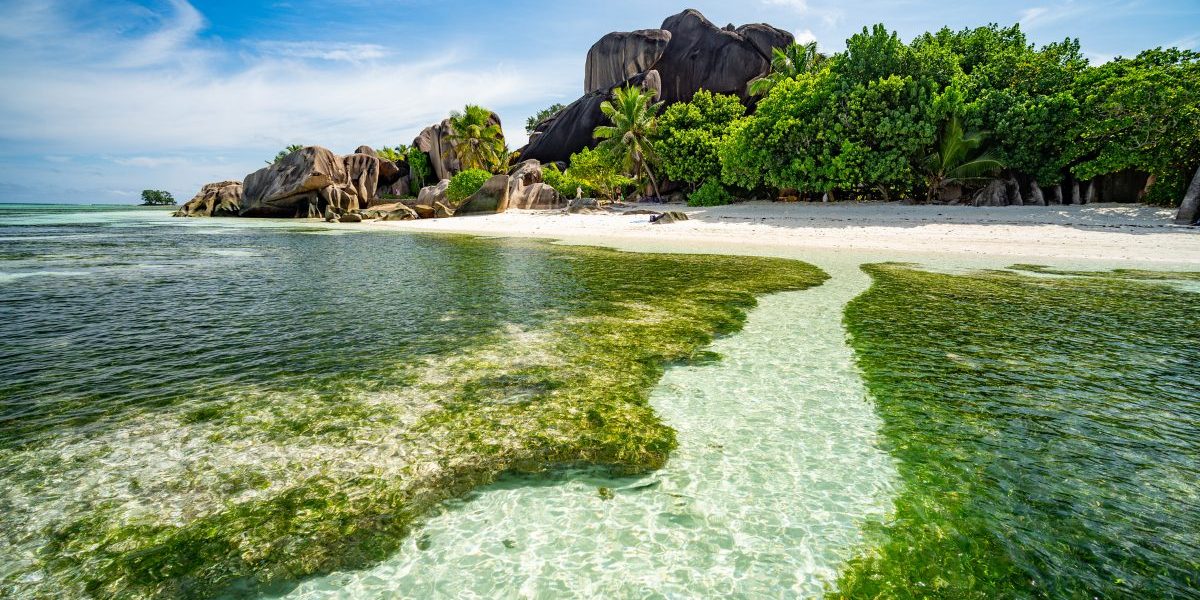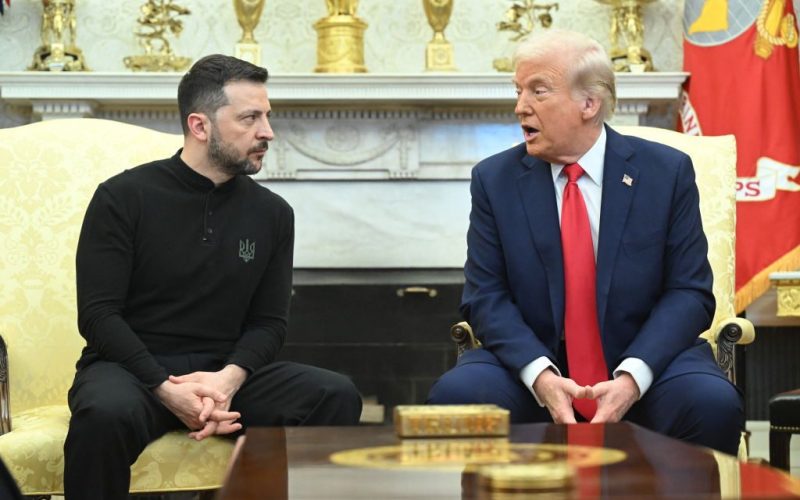Recommendations
- The Nairobi Convention should adopt the Strategic Framework and move forward with the development of an implementation plan.
- More research and consultation are needed to assess the desirability and appropriate design of a regional platform to support public–private partnerships for ocean governance and protection.
- While the establishment of the abovementioned platform is being assessed, existing regional platforms and processes should be used to promote dialogue and collaboration around private sector partnerships in the region.
Executive summary
With oceans under increasing pressure from a range of anthropogenic threats, including climate change, the need for effective partnerships for ocean governance and protection has never been more pressing. The private sector has a key role to play in such partnerships, yet an assessment of partnership experiences in the Western Indian Ocean (WIO) showed that outcomes have often been disappointing. This briefing highlights challenges and opportunities for more effective private sector partnerships aimed at contributing to a more sustainable Blue Economy in the WIO region. It draws on the author’s experience in supporting the development of the Strategic Framework for Private Sector Partnership for the Western Indian Ocean Region (hereafter the Strategic Framework), produced by the Nairobi Convention Secretariat.
Introduction
The High Level Panel for a Sustainable Ocean Economy has highlighted that maintaining a productive and healthy ocean is becoming ever more difficult in the context of an expanding Blue Economy and increasing use of ocean space for human activities. It argues that ‘enduring sustainability can be achieved only if best practices are applied in both the public and private sectors, and where productive partnerships between the two are encouraged and advanced’.1Jan-Gunnar Winther and Minhan Dai, “Integrated Ocean Management” (Blue Paper, World Resources Institute, Washington DC, 2020), 33.While there are many examples of the private sector’s engagement in adopting more sustainable practices and contributing to ocean governance initiatives, there is significant potential to expand such practices and partnerships.
This briefing looks at the major challenges and opportunities for more effective private sector partnerships for a sustainable Blue Economy in the WIO region, based on the author’s experience in supporting the development of the Strategic Framework.2Nairobi Convention and UN Environment Programme, “A Strategic Framework for Private Sector Engagement in the Western Indian Ocean” (UNEP, Nairobi, 2021).The development of this strategic framework involved consultations with a wide range of public and private sector stakeholders.
Global and regional policy frameworks for a sustainable Blue Economy
Ocean governance has remained high on the global agenda since the release of the seminal multi-agency report Green Economy in a Blue World in 2012 and the inclusion of oceans and seas in the UN Conference on Sustainable Development (Rio+20) outcome document “The Future We Want” the same year. The inclusion of the oceans agenda in the UN Agenda 2030’s Sustainable Development Goals (SDGs) as SDG14 (‘Life Below Water’) was a key milestone and will support continued political momentum around ocean-related issues. Since Rio+20, we have seen the development of a number of Blue Economy and ocean governance strategies and initiatives at national, regional and global levels. These have ranged from broad-ranging initiatives such as the Global Ocean Commission and the High Panel for a Sustainable Ocean Economy to more issue-specific initiatives addressing marine plastics, ocean accounts and other issues.
In Africa too, the Blue Economy and ocean governance agenda has been reflected in various policy frameworks, including the overarching continental development framework of the AU, Agenda 2063. With the restructuring of the AU Commission, the Blue Economy is now more firmly institutionalised within this structure through its inclusion in the Commission for Agriculture, Rural Development, Blue Economy and Sustainable Environment. Indeed, with the proliferation of Blue Economy and ocean governance initiatives and strategies at the regional level, coordination and prioritisation have presented significant challenges, with the risk that implementation may ultimately suffer. These include the 2050 Africa’s Integrated Maritime Strategy (2014), the African Charter on Maritime Security, Safety and Development (Lomé Charter, 2016), the Africa Blue Economy Strategy (2020) and an ocean governance strategy for Africa, currently under development – a process spearheaded by the UN Environment Programme.
A call for multi-stakeholder partnership, and specifically partnership with the private sector, is a common element in numerous Blue Economy and ocean governance strategic frameworks and initiatives. Effective partnerships have been highlighted as being key to realising the SDGs, and this is equally true for SDG14. Private sector actors have already made significant commitments to contribute to ocean conservation initiatives and more sustainable business practices, whether at the level of individual companies, industry associations or representative organisations such as the World Ocean Council. Numerous companies have registered voluntary commitments to support the implementation of SDG14 through the UN Ocean Conference process. There have also been important developments in exploring the role of the private sector in the provision of sustainable Blue finance.3See Ryan Whisnant and Veerle Vandeweerd, “Investing in the New Blue Economy: The Changing Role of International Development Organizations in Catalyzing Private Sector Investment in Support of Regional Strategic Action Programmes for the Sustainable Development of Coasts and Oceans”, Journal of Ocean and Coastal Economics 6, no. 1 (2019): 8; Food and Agriculture Organization, “Blue Finance Guidance Notes: Blended Finance” (FAO, Rome 2020).
In the development of the Strategic Framework, consultations were conducted with a range of stakeholders, including representatives from industry, non-governmental organisations (NGOs) and government, around experiences related to private sector partnerships for enhanced ocean governance. Although there are examples of good practices in partnerships and initiatives involving the private sector, the general sentiment among stakeholders was that more could be achieved and that partnerships often failed to live up to expectations.
Towards meaningful partnership
A number of factors were identified that contribute to the mixed (and sometimes disappointing) outcomes of private sector partnerships focused on ocean governance in the WIO region. These include that the private sector was often seen as merely a source of funding by other stakeholders, rather than recognising the full range of roles private sector actors could play in partnerships. Related to this, the importance of clearly outlining the role of the private sector within a given partnership was emphasised. Similarly, private sector interests were generally not sufficiently taken into account in the design and implementation of partnerships, making it difficult for private sector partners to justify the time and resources required for participation. It was further noted that partnerships often failed to achieve their potential impact owing to a lack of common goals and vision among the stakeholders involved. More generally, it was recognised that more should be done to ensure adequate understanding of the potential benefits of marine and coastal protection for all stakeholders, including the private sector. It was notable that respondents from all sectors felt that a lack of trust between stakeholders inhibited the design and implementation of partnerships.
These challenges must be meaningfully addressed if effective partnerships are to be designed and implemented effectively. Most fundamentally, partnerships must be designed around clearly articulated objectives, project roles and responsibilities, and developed on a basis of mutual benefit for all involved.
Specificity is important. Many initiatives refer in general terms to engagement or cooperation with the private sector, yet this often fails to materialise in a meaningful way. The Blue Economy includes a range of sectors such as capture fisheries, aquaculture, conservation, tourism, shipping and ports, shipbuilding and repair, oil and gas, and undersea cabling. There are also a number of emerging sectors, including coastal and offshore renewable energy, coastal and seabed mining, desalination and marine bioprospecting. Private sector actors involved in these activities are not a homogenous grouping; they include local and international firms and range from multimillion-dollar investments in offshore oil and gas to the smallest micro-enterprises. In fact, small and medium-sized enterprises comprise the backbone of Africa’s economy, accounting for approximately 90% of all companies and providing nearly 80% of its employment.4José Filomeno de Sousa dos Santos, “Why SMEs Are Key to Growth in Africa”, World Economic Forum, August 4, 2015.Supporting industries, such as finance and insurance, can also contribute to sustainable ocean governance (see, for example, the Sustainable Blue Economy Finance Principles). Finally, various industry-specific or more general private sector associations, business councils and other structures may operate at a city, provincial, national or regional level. In designing partnerships and selecting cooperation partners, the diversity of private sector actors should be considered carefully. The scope, geographic scale and specific objectives of any partnership will determine whether partnerships with individual firms, representative bodies, and/or small-, medium- or large-scale operators are most appropriate, and equally whether a sector-specific or multisectoral approach may be best suited to the achievement of the partnership’s objectives.
The Strategic Framework stresses that to successfully scale up and accelerate momentum, engagement with the private sector must go beyond financial contributions and resources to an active involvement in and ownership of environmental sustainability imperatives. Private sector engagement must also include ‘the successful mobilization and leveraging of their technical expertise, as well as of their human and managerial resources, to mainstream and scale up technologies and innovative approaches, which will accelerate and promote sustainability’.5Nairobi Convention and UNEP, “A Strategic Framework”, 18.Consider the range of potential roles that the private sector can play in ocean governance and protection partnerships:6Nairobi Convention and UNEP, “A Strategic Framework”.
- in-kind contributions of staff and/or equipment;
- sharing of information, including best practice guidelines;
- collection and sharing of data;
- adoption/mainstreaming of standards, best practice guidelines and governance approaches (eg, ecosystem-based management or technologies/practices such as equipment changes to reduce bycatch, clean technologies to reduce pollution, etc.);
- joint implementation of demonstration projects;
- provision of funding (eg, corporate social investment, contributions from private foundations, etc.);
- contributions to enhanced accountability of governance actors and other private sector players, particularly in settings where regulation and enforcement are weak; and
- advocating for policy change and enhanced implementation. This could be further used to leverage information/marketing/communication networks within the private sector to generate global awareness around key issues and to mobilise action.
Effectively fulfilling such roles in the context of multi-stakeholder partnerships requires the commitment of resources (financial or otherwise) in the face of competing demands, as well as corporate governance and fiduciary accountability mechanisms. Framing partnership outcomes and engaging with private sector representatives around the potential benefits of the partnership, whether related to risk management, cost saving, reputational advantages, innovation or others, are therefore imperative.
The case for a Blue Economy platform for the Western Indian Ocean region
The Strategic Framework identifies a number of potential partnerships that could be prioritised to revitalise multi-stakeholder partnerships in the WIO region. These proposals emerged from a detailed assessment of current activities and ocean governance challenges in the region, together with multi-stakeholder consultations. The partnerships would either build on existing initiatives that show promise but are currently implemented in only selected sites in the region, or implement activities called for through regional frameworks. In all cases, they are aligned with regional ocean governance objectives as articulated through the Nairobi Convention work programme. The proposals include:
- a regional capacity-building partnership to better understand the application of ocean accounting frameworks in ocean governance processes;
- a regional alliance for sustainable octopus utilisation;
- a regional partnership to promote lesson sharing, scaling and replication of Information communications technology for fisheries solutions to improve management and livelihood outcomes for the small-scale fisheries sector;
- the establishment of a regional sustainable tourism council to promote the development and implementation of a regional brand for marine ecotourism;
- the establishment of a regional coordination centre for marine pollution preparedness and response; and
- the establishment of a multi-stakeholder alliance to support long-term monitoring of ecosystem-related indicators and ocean-climate observations.
It was recognised that there was a need for a platform that could facilitate innovation, information exchange and partnership building between government, the private sector and civil society actors in the region. A number of regional institutions and processes have been established to facilitate engagement between governments, civil society and academia. These include the Western Indian Ocean Marine Science Association and the Nairobi Convention itself, as well as processes coordinated by the convention, such as the Science to Policy Platform. The Consortium for the Conservation of the Coastal and Marine Ecosystems in the Western Indian Ocean (WIO-C) was established to enhance cooperation between international and regional NGOs in partnership with intergovernmental organisations. Similar structures and processes that include the private sector have not yet been developed in the region. The WIO-C could serve as a model for such a platform, which would include governance, conservation and private sector stakeholders. Such a platform could serve not only to support new partnerships but also to allow for coordination, reporting on results, lesson sharing and dialogue. The Framework Strategy proposes that the establishment of such a platform be explored further. It notes that more work on feasibility, governance structures, financing and other elements is needed to inform a decision on whether such a structure would indeed be an appropriate and sustainable innovation to meaningfully support enhanced public–private partnerships in the region.
Conclusion
Achieving SDG14 will require effective partnerships at multiple levels. Private sector stakeholders have signalled their support for SDG14 by adopting a range of sustainable practices and joining with government and civil society in ocean conservation and governance initiatives. Achieving meaningful outcomes through partnerships, however, is by no means assured. The Strategic Framework is a tool that can support more effective partnership for ocean governance in the WIO region, thereby supporting national, regional and global frameworks towards sustainable Blue Economies.
Acknowledgement
SAIIA gratefully acknowledges the support of the Swedish International Development Cooperation Agency (SIDA) for this publication.







